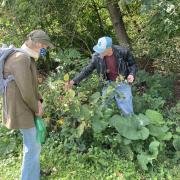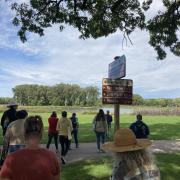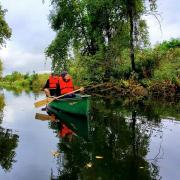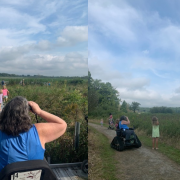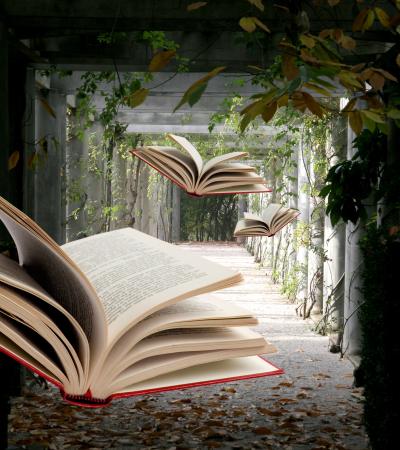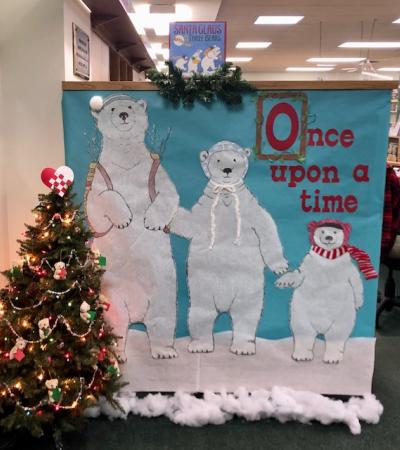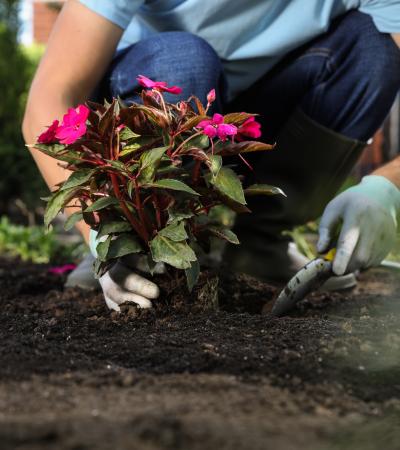Children
Tweens (10-12)
Adults
Intergenerational
Library Naturalist-in-Residence
$2,501-5,000
The Madison Public Library Naturalist-in-Residence encouraged our community to explore, learn and reflect upon the natural world through accessible nature-based experiences guided by a local naturalist.
A partnership between Madison Public Library and City of Madison Parks, the project focused on local urban parks, waterways and conservation areas and developing and deepening community connection to our city’s natural spaces. The theme of the residency was “Nature is for Everyone,” and we aimed to create inclusive and accessible events for all community members through nature-inspired art activities, nature walks and more.
Advanced Planning
The goals of the Naturalist-in-Residence were to:
- Strengthen connections between people and nature.
- Build environmental literacy.
- Create accessible nature-based experiences.
- Inspire wonder and stewardship of the natural world.
Planning began five months prior to the residency.
Planning steps included:
- Drafting a proposal and budget to secure funding.
- Meeting with partners, especially our partners at the City Parks department.
- Recruiting a Naturalist: developing an application, reviewing submissions and conducting interviews, onboarding the Naturalist to familiarize them with library processes and procedures.
- One month of collaboration time with between library coordinator and Naturalist.
- Time to explore themes, potential partnerships, solidify goals, develop experiences and activities.
- Submitting a park permit and other necessary forms for use of naturalist spaces.
Marketing
We promoted the residency through a press release, social media (Facebook and Instagram), library e-newsletters, cross-promotion with program partners, flyers and local and state media (newspaper features, radio interviews)
We collaborated with artist SmereTactics on a Naturalist-in-Residence poster in English, Spanish and Hmong. Posters were available free at all Madison Public Libraries and helped raise the visibility of the residency.
Budgeting
The majority of our budget was spent on compensating the Naturalist, who led 12 programs over the course of two months. Payment was calculated per program based on our library's standardized payment guidelines. The Naturalist also received additional payments for media interviews and planning time.
The remaining budget was spent on marketing (paid ads, posters), supplies and collaborator stipends. Approaches for cost-savings include cost-sharing with partner organizations, reducing the length of the residency or reducing supply costs. Prioritize compensating presenters and collaborators and marketing needs.
Day-of-event Activity
The majority of events were held outdoors and the Naturalist led or co-led every activity. At least one staff member was present to assist and represent the library.
The library Naturalist coordinator was responsible for confirming permitting needs, monitoring severe weather conditions, requesting ASL interpretation, use of an outdoor wheelchair and any other accommodation requests. The Naturalist was responsible for identifying supply needs for each program and preparing content.
Program Execution
The Naturalist-in-Residence was positively received and every program had full registration. Community members were enthusiastic learners and collaborators.
The Naturalist-in-Residence strengthened our connection to the City Parks department, local environmental groups and community members interested in learning more about the natural world. We created Naturalist-themed booklists and book displays and saw an increased demand for specific collections, such as foraging books. We used surveys to collect responses from attendees and partners, and used their feedback to inform future iterations of the residency.
Their feedback demonstrates the success of the program. We received comments such as: "The birding walk was so fun! I am so very grateful that the Library arranged for me to use the outdoor wheelchair. I could not have gone on the nature walk without it"; "I learned a lot during the program, including that there is much more I can learn. Despite that lesson, though, I came away with some specific information that I can use, and which I later shared with a friend as we took a walk through Warner Park."
The library Naturalist coordinator also had an evaluation meeting with the Naturalist to share reflections on the residency.
Advice
Nature-based experiences provide invaluable learning opportunities for community members. Be intentional about your goals and intended audience for the series and make sure equity and inclusion is at the center of your planning process. It can be challenging to be realistic about time and budget constraints, so it could be worthwhile to start small and scale up as you are able.
Supporting Materials
- Feedback (Coming Soon!)
- Programming Librarian Facebook Group

